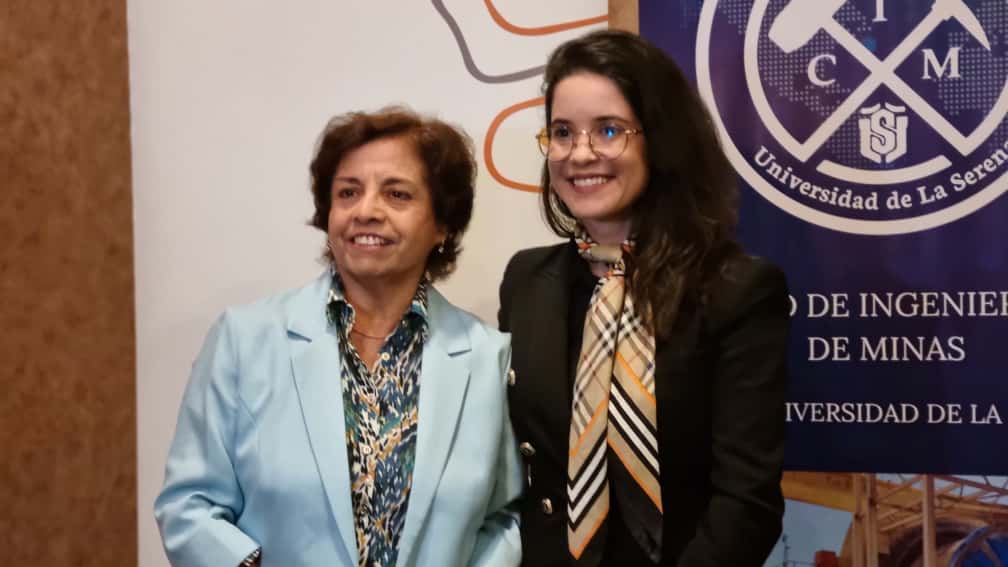CMP Highlights the Strategic Role of Chilean Iron in the Global Decarbonization Process

During the seminar “Critical and/or Strategic Minerals,” the company discussed how Chile’s high-grade magnetite iron is key to enabling the global decarbonization of the steel industry.
Compañía Minera del Pacífico (CMP) participated in the seminar “Critical and/or Strategic Minerals: A New Boost for Chilean Mining and the Coquimbo Region,” organized by CORMINCO and the College of Mining Engineers of the University of La Serena, with the sponsorship of the Ministry of Mining and the university itself.
The event brought together government authorities, mining representatives, and academia to analyze Chile’s challenges and opportunities under the new National Critical Minerals Strategy.
Representing CMP, Gabriela Da Silva Ferrao, Commercial Manager, delivered the presentation “High-Grade Magnetic Iron: A Strategic Mineral to Enable Decarbonization,” addressing the role of Chilean iron—particularly the high-quality magnetite produced in the Huasco Valley—as an essential input for the production of green steel through DRI–EAF technology (Direct Reduction – Electric Arc Furnace), which can reduce CO₂ emissions by up to seven times compared to traditional processes.
“The high-quality magnetic pellet feed we produce at CMP enables the manufacturing of more energy-efficient steel with lower emissions. Its limited availability in the global market gives Chile a unique opportunity to play a strategic role in sustainable supply chains,” said Gabriela.
“The future of Chilean mining goes beyond copper. High-grade iron demonstrates our country’s ability to support global decarbonization efforts. We are already producing it—it’s viable, capable of attracting investment, and driving development for our communities,” she added.
During her presentation, Gabriela emphasized that CMP accounts for 99% of Chile’s iron exports, consolidating its leadership at the national level. She also highlighted that since 1999, the company has produced direct-reduction pellet feed in the Huasco Valley, a product primarily exported to the Middle East, one of the leading regions in low-emission steel production using DRI–EAF technology.
Thanks to the exceptional quality of this mineral, CMP recently formalized a commercial agreement with a major Egyptian steelmaker, strengthening Chile’s position within global supply chains.
The seminar also featured the participation of Aurora Williams, Minister of Mining, who presented progress on the National Critical Minerals Strategy, currently under review following the close of its public consultation. The Minister emphasized the importance of strengthening collaboration among the State, academia, and the private sector to position Chile as a reliable and sustainable supplier in the context of the energy transition.
“Mining in the Coquimbo Region is fundamental—it contributes over 20% of the regional GDP and has strong territorial linkages. The definition of critical minerals varies worldwide, but for us, iron is a strategic mineral due to its production volumes and quality. Chile is a responsible mineral producer, and iron plays a key role both in the Atacama and Coquimbo regions, especially given the quality of the final product we export,” stated Minister Williams.
She added that the mining sector represents 10% of Chile’s national GDP and 55% of its exports, with an investment portfolio exceeding US$83 billion, reaffirming its strategic role in the country’s economic and regional development.
Finally, Paola Botto, Chair of the Board of CORMINCO, highlighted CMP’s contribution and the importance of fostering a regional and technical perspective on strategic minerals:
“The recognition of high-grade iron as a critical mineral should be reflected in the national plan promoted by the Government. Minerals like those produced by CMP are essential for regional development and for advancing toward more sustainable and traceable mining.”
With this, Botto reaffirmed the sector’s call to acknowledge Chilean high-grade iron as a key resource for the energy transition and the nation’s sustainable growth.
 Copiapó Valley
Copiapó Valley  Cerro Negro Norte Mine
Cerro Negro Norte Mine  Magnetite Plant
Magnetite Plant  Puerto Punta Totoralillo
Puerto Punta Totoralillo  Huasco Valley
Huasco Valley  Los Colorados Mine
Los Colorados Mine  Pellets Plant
Pellets Plant  Puerto Guacolda II
Puerto Guacolda II  Elqui Valley
Elqui Valley  El Romeral Mines
El Romeral Mines  Pleito Mine
Pleito Mine  Puerto Guayacán
Puerto Guayacán